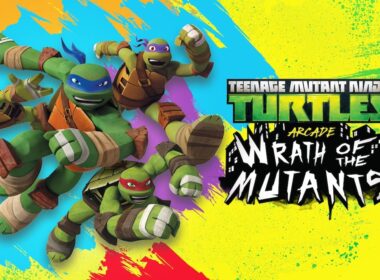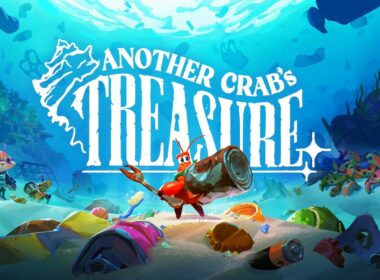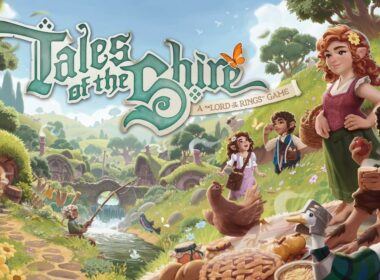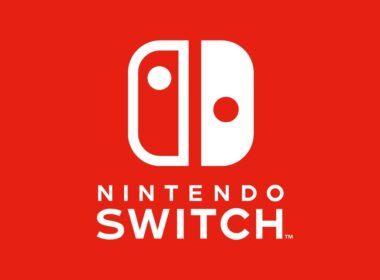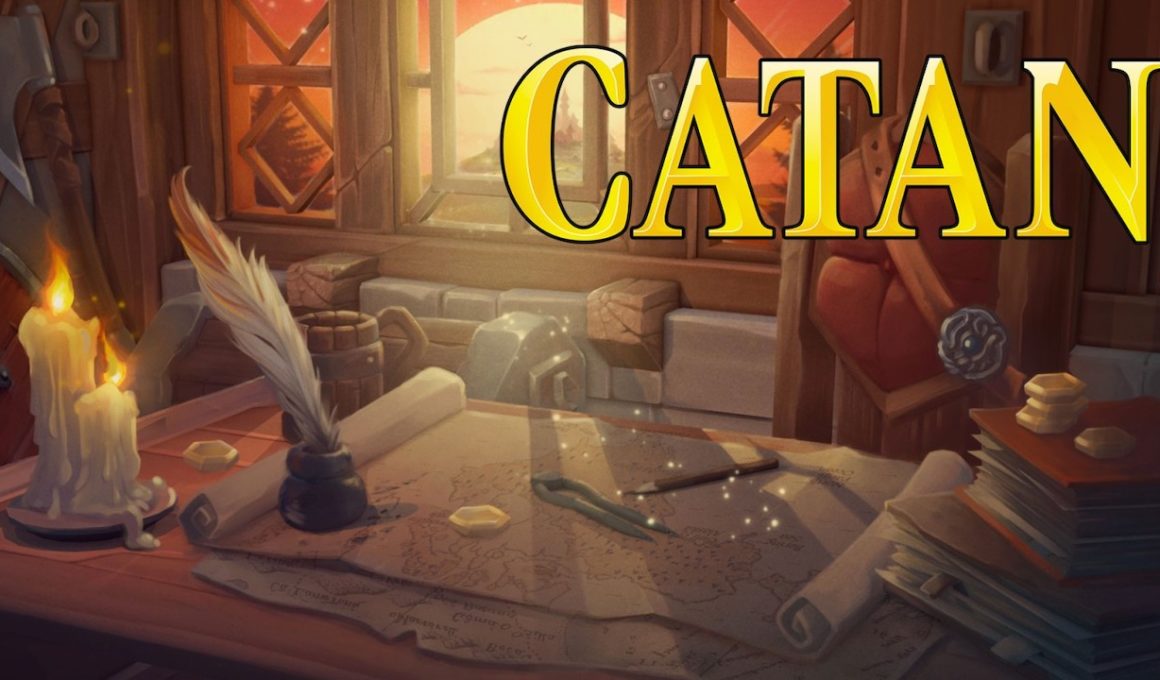While video games have and continue to always be my favorite way of passing the time, in the last few years I’ve also found myself branching out more and more into the world of tabletop gaming. What initially started out as mere curiosity has now grown into something I adore, every new box bought an excuse to get family and friends gathered around a table. Whether it’s something simple like Tsuro or a little more involved like Pandemic.
When it comes to merging board games and video games together the results can often be mixed. UNO on the Xbox 360 remains a personal highlight of mine on the system, for example, offering a perfect adaption of the card game playable online with anyone – a feature that at the time was mind-blowing. More recent titles like Trivial Pursuit Live meanwhile offer an experience nothing like the original board game instead opting for a more generic and ‘video-game-like’ effort.
Surprisingly Settlers of Catan (or Catan for short) is a game I’ve never had the chance to play for myself despite it being one of the most popular selling tabletop games of all time and something constantly recommended to me by friends. The idea of a Switch version I can take anywhere with me is certainly appealing, but is this a case of board game to video game done well or not?
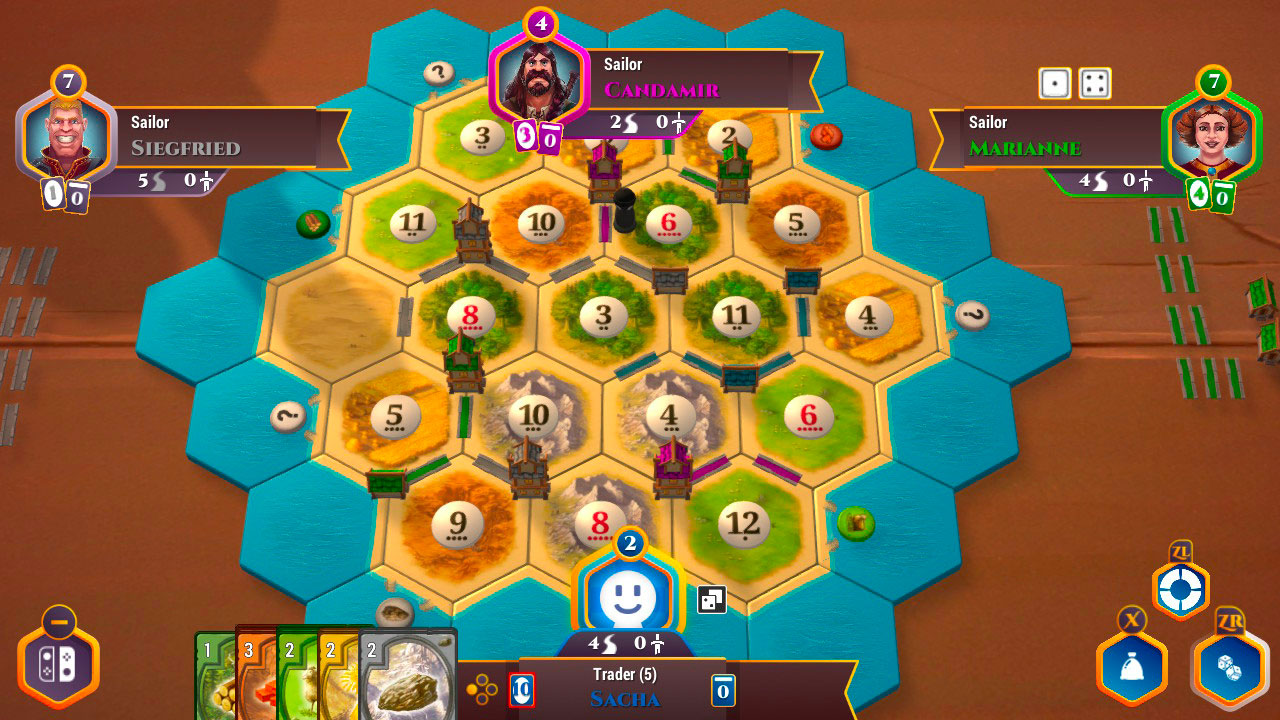
Catan takes place on a board made entirely of hexes, each one marking a different terrain such as dessert, fields, and mountains. Your main goal is to be the first player to collect ten victory points, earned via building settlements and cities, completing objectives or by achieving certain accomplishments such as holding the title for longest road or biggest army. It’s a game all about development through a combination of gathering resources, building and expanding your own civilization whilst also strategically targeting the opposing players to hinder the growth of their own settlers.
Each hexagonal tile has a number assigned to it and each turn starts off with a dice roll that will grant resources to whoever has a settlement adjacent to the tile matching that number. If you have multiple settlements then that means more resources. Players can then choose to construct new settlements, cities (which offer double resources and victory points) and adjoining roads. They may also trade resources and buy or use game affecting development cards. If that sounds like a lot to take in, Catan is definitely a game that initially feels intimidatingly complex but becomes much clearer after a handful of practice turns. Getting around the UI of the Switch version while perhaps not brilliant is clean and clear enough you’ll find yourself whizzing through menus and making decisions within a handful of games.
The Switch version of Catan offers both the original base game as well as the Seafarers expansion. For single players, the campaign offers over a dozen maps each one playable on three difficulties. As you win, you’ll unlock more maps to play. If, however you want to just jump right in and customize your own rules and settings then the game’s scenario option does exactly that. As you play, you’ll earn experience which in turn will unlock new styles of tokens, playing tables and more. They’re a neat bonus albeit one that takes too long to actually unlock.
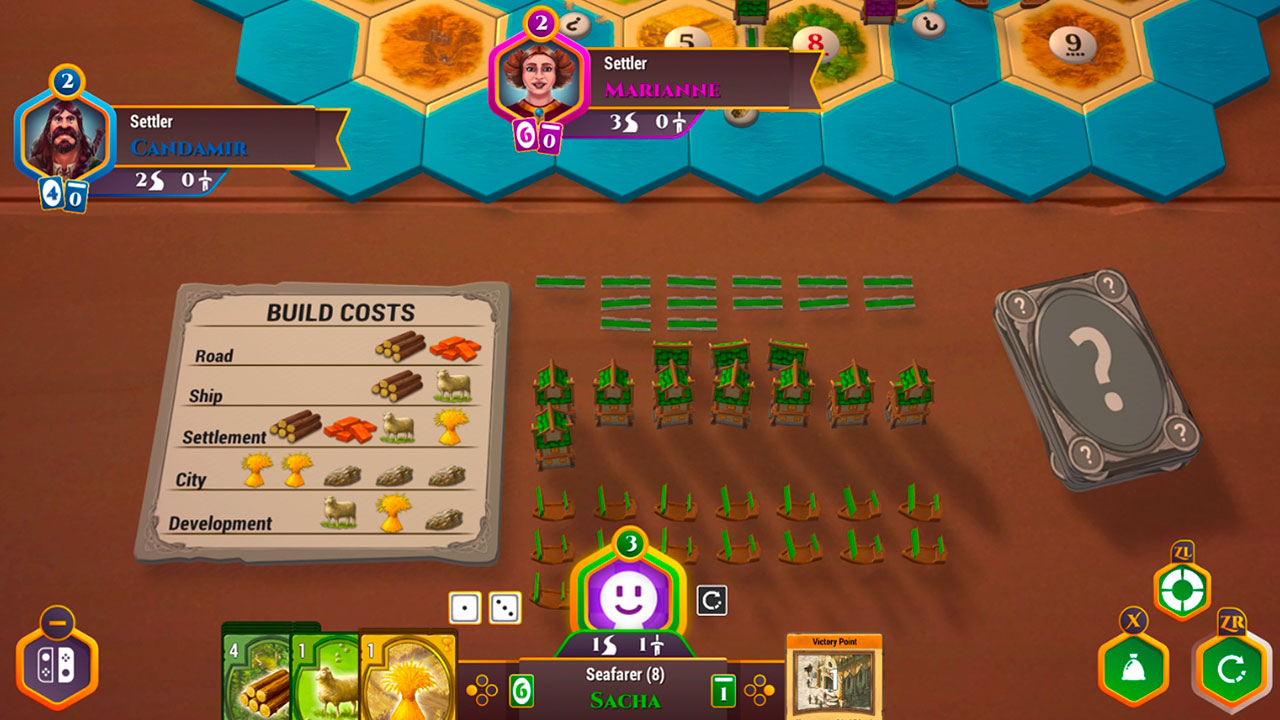
Perhaps Catan’s biggest sin – and arguably one that’s somewhat understandable – is a complete lack of local multiplayer. While yes, the game does offer online play for up to four (of which two spaces can be filled with AI) it can be a tough task actually finding anyone, not to mention the fact the game moves much slower as you often find yourself waiting long periods for someone else to take their turn. Like any board game playing with a group of friends in the same room is a must and without that option, the Switch version of Catan ultimately feels handicapped.
To a degree you can understand this decision, the fact players need to hide their cards from each other being something tough to replicate on a single screen. Still, there are ways around this obstacle such as introducing the use of smartphones not too dissimilar to that of The Jackbox Party Pack series. Even something as simple as offering a pass and play option in handheld mode would have been at least something. Anyone who has ever played a tabletop game before will agree a large part of (if not all) the fun comes from having the players in the same room together duking it out. The fact the Switch version of Catan cannot offer this is a major blow.
It’s tough to fault Catan on Switch when it comes to how faithful this recreation is compared to the original source material. Unfortunately, a pretty vacant online community and a lack of any sort of local multiplayer really hurt its long-term appeal. An enjoyable adaption but one unlikely to replace the original physical version any time soon.
Version Tested: Nintendo Switch
Review copy provided by Asmodee Digital

